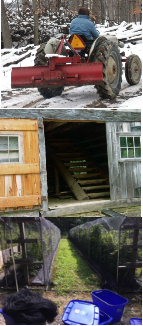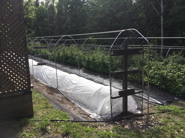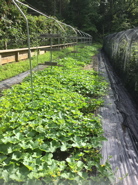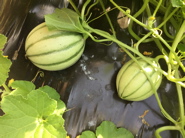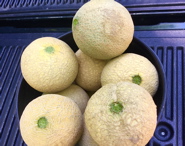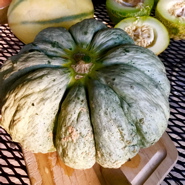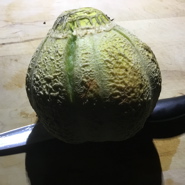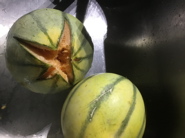
|
The next tiny melon I spied on a different trip was at an outdoor market in Paris. The farmer had several baskets of them, same size but varying stripes and shades of green and yellow. He coincidentally was from the same region I had originally discovered the tiny melons. When I inquired as to the type of melon the farmer told me it was a cavaillon (ca-vi-lon) or charentais melon (cher-un-tay). My French, not as good as it should have been to have this conversation, I inquired as to the varieties and I think he told me petit gris Rennes and melon de Trest. From then on I was hooked. Defined, a charentais melon is a type of cantaloupe (Cucumis melo var. cantalupensis). It is similar to cantaloupe but with a more fragrant smell. Developed in France around 1920 as a more refined cantaloupe. Characteristically, they will be the size of a softball, green or yellow exterior with stripes and will have an unforgettable fragrance and taste. The next time I saw the melons was at an outdoor market in Martinique. These were not as good as the ones I had in France, but close enough. This led me to think I could grow these at home. Since then I have researched these melons and found that they have primarily been grown only in Provence, about 80% of them. Anything found outside of Provence is not as sweet so they say...
|
|||||||||||||||||||
|
||||||||||||||||||||
©
2009-2020 Shagbark Farm Ohio L.L.C All Rights Reserved. |
